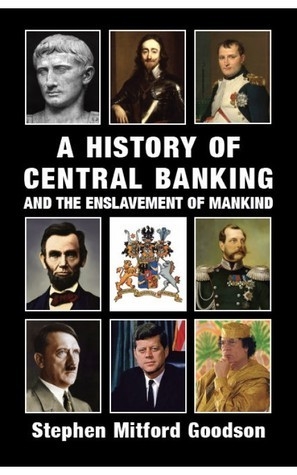
Chapter I
How Usury Destroyed the Roman Empire
Money, being naturally barren, to make it breed money is
preposterous and a perversion from the end of its institution, which
was only to serve the purpose of exchange and not of increase... Men
called bankers we shall hate, for they enrich themselves while doing
nothing.
– Aristotle, Politics
The monetary systems of the Roman era (753BC – 565AD) may be
divided into three distinct periods, where units of three different
metals were used as the means of exchanging goods and
services.Although there is evidence of modern human occupation
(Homo sapiens sapiens) in the Rome area going back 14,000 years (with
Neanderthals having lived there approximately 140,000 years ago),
Rome, as a city, is traditionally said to have been founded by
Romulus and Remus in 753BC in a region surrounding the Palatine
Hills, also known as Latium. According to the legend, Romulus
(who killed his brother Remus) became its first king, but later shared
the throne with Titus Tatius, the ruler of the Sabines.
Around 600BC Latium came under the control of the Etruscans. This
lasted until the last king, Tarquin the Proud, was expelled in 509BC
and the Roman Republic was established. The Etruscans, a people of
Aryan origin, created one of the most advanced civilisations of that
period and built roads, temples and numerous public buildings in
Rome.
The first “money” used in Rome was the cow. This was not true
money, but a barter system. Many early peoples used cattle as a
medium of exchange. According to the legend of Herakles and the
Augean stables, the cattle kept there, over 3,000 in number,
represented the treasury of King Augeas.
The Copper Age (753 – 267BC)
As time went on, the Romans took to using, instead of cattle,
irregular lumps of copper or bronze. These lumps were called aes
rude (rough metal) and had to be weighed for each transaction.
There was an increase in trade and Rome became one of the most
prosperous cities in the ancient world. This prosperity was based on
uncoined copper, later bronze, metal which was measured by weight
according to a fixed system of units. It was issued by the Roman
Treasury in the form of ingots weighing 3½ lbs (1.6kg) with the full
backing of the state and was known as aes signatum (stamped metal),
because it was stamped by the government with a cow, eagle or
elephant or other image. Sometimes they were made to resemble a
scallop shell. In 289BC these ingots were replaced by discoidal, cast
leaded bronze coins aes grave (heavy metal). They represented
national money and “were paid into circulation by the state and
[each was] only of value inasmuch as the symbols on which its
numbers were recorded, were scarce or otherwise.” This money
was thus based on law rather than the metallic content (although
that content was standardised, and the coin did have some intrinsic
value, unlike most coins today). This can be considered as an early
example of the successful use of fiat money.
While fiat money is much criticised in some quarters, for example by
the followers of Austrian economist Ludwig von Mises,
there is
nothing wrong with it, as long as it is issued by government, not by
private bankers, and is carefully protected against counterfeiters.
Non-fiat money, in contrast, has the serious drawback that whoever
sets the prices of gold and silver, i.e. private bankers, can control the
nation’s economy.
A History of Central Banking and the Enslavement of Mankind by Stephen Mitford Goodson




